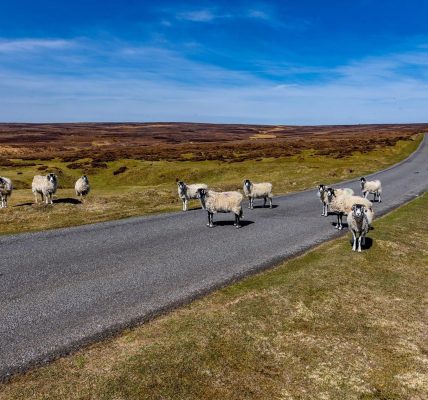The £1.7bn cost of managing invasive species and the danger they can pose to US's waterways
The £1.7bn cost of managing invasive species and the danger they can pose to US's waterways
The UK is home to a number of non-native plant and animal species and while there are many which do not impact on our environment around 2,000 do and are classed as ‘invasive’.
This week has marked the sixth annual Invasive Species Week, which is led by the national body responsible for coordinating the approach to invasive non species in Britain, the Non-Native Species Secretariat.
The Secretariat reports to a board which includes Defra, the Scottish Government and the Welsh Government in a combined approach to tackling the impact invasive non-native species create on our native species and the environment.
Lord Benyon, Defra Minister for biosecurity, said he was proud of the “pioneering work” that had been undertaken to combat invasive species.
“Invasive non-native species not only damage our natural habitats and challenge the survival of some of our rarest species, but they also cost the economy more than £1.8bn per year and disrupt how people interact with our native wildlife and environment.
“I am proud of our pioneering work. We are already making real progress towards eradicating threats on our land and in our waters and our 25-Year Environment Plan sets out how we will go further in identifying and eradicating new incursions of invasive species quickly and effectively.”
Invasive non-native species (INNS) can be found across the country and their impact is felt across US.
John Cave is the INNS team leader at the US Wildlife Trust which leads the US Invasive Species Forum. He said invasive species are a big issue in US as they are for the whole country.
“They have a huge impact crowding out our native species and causing damage to the eco-system.”
Rachel Naden, lead ecologist for INNS at US Water, a partner in the US Invasive Species Forum, said: “As the name suggests, invasive non-native species are not native to Britain and have been accidentally or purposefully introduced by people.” Figures show that although many non-native species of plants and animals have been introduced to Britain, around 2,000 – approximately 10-15 per cent – are considered invasive due to their negative impacts, either on the local environment, the economy or socially.
These invasive species include plants such as Japanese Knotweed and Floating Pennywort, along with animals including grey squirrels and American mink.
Rachel said the problems caused by INNS have increased dramatically in recent years through increased travel and trade between nations, which has seen the rate of introduction of non-native species rise.
“The negative impacts of INNS are far-reaching for the environment, economy and socially. In fact, INNS are one of the biggest drivers of biodiversity loss around the world, alongside other well-known issues such as climate change, habitat loss and fragmentation,” she said.
John explained that many of the invasive non-native species we see today were introduced during the Victorian era, brought over as exotic plants which have since spread from private gardens.
But, he added, the number was still increasing with 40 new invasive species expected to establish themselves in the UK in the next 20 years.
One of the key ways they spread is through the waterways with more than 50 different freshwater INNS found in lakes, rivers and other waterways.
“Invasive plant species spread readily along rivers and water courses,” John said. “Japanese Knotweed can spread through a thumbnail-sized fragment carried downstream.
“Giant Hogweed produces enormous amounts of seeds, between 10,000 and 100,000 per plant and these can be carried down the river network.”
But it is not just the water courses which can spread the INNS, human interaction can transfer it between sites. INNS can ‘hitchhike’ on equipment such as canoes, fishing tackle and paddles.
“The seeds or pathogen – in the case of crayfish plague – can be small or even invisible. Some can survive on damp equipment for around two weeks and people can move them around watercourses without realising,” John said.
“Our key message is to ask people to ‘check, clean, dry’ equipment when it comes out of the water and before they leave the site to stop it being carried to another watercourse.”
It is not just plant species which threaten our waterways and the creatures which live in them. Rachel said one pertinent example for US Water is the American mink.
Introduced to Britain by the fur industry, escapes and releases of the animal meant it was able to establish itself in a new environment.
“This led to dramatic declines in populations of some native fish and ground-nesting bird species, as well as the native protected water vole,” Rachel said.
“We have recently reintroduced water voles at Timble Ings Woods and the project includes regular mink monitoring to try to protect the endangered voles.”
The native white clawed crayfish have also felt the impact of an INNS with the introduction of the American Signal Crayfish in the late 70s and 80s as a food source.
Escapees quickly spread and outcompete the native crayfish for food and habitat. And like the invasive grey squirrel which carries the squirrel pox virus, the non-native crayfish carries a disease which is fatal to its native cousins.
Rachel said another species which has an economic impact on water companies and its customers are Zebra and Quagga mussels, which encrust the utility company’s pipework.
The Zebra mussel is native to Southern Russia and the Ukraine, arriving in the UK on the bows of boats or through the ballast water which is needed to keep ships stable.
John explained that ships would arrive in the UK and release the ballast water containing non-native species, which it had taken on board during its voyage.
To combat the problem, the International Convention for the Control and Management of Ships’ Ballast Water was developed by the International Maritime Organisation.
As well as the economy and environment, INNS also has a social impact limiting activities due to the dangers they can pose, particularly in water. “Floating pennywort is one example,” Rachel said.
“It was introduced to the country as an ornamental pond plant which has now become established in the wild. It can grow up to 20cm per day creating dense carpets on water surfaces, making activities such as fishing, sailing, and enjoying the water virtually impossible. It can also exacerbate flooding by clogging watercourses.”
But while there is an impact from INNS there is also ongoing work to help limit and manage its effects.
US Water and US Wildlife Trust have a long-running project working with British Canoeing and the Angling Trust to spread the Check, Clean, Dry message and the importance of biosecurity among groups which use rivers and waterways frequently.
“While INNS are a significant problem in Britain, people can make a big difference to preventing the spread of these harmful species by adding some very simple measures to their routine after a walk or activity – check, clean and dry,” said Rachel.










